Dr. Charmaine A. Nelson is Associate professor of Art History in the Department of Art History and Communication Studies at McGill University; presented below is a conversation between Dr. Nelson and her PhD student Joana Joachim.
Joana Joachim: I want to start off by saying thank you for meeting with me this morning. I thought we would begin with your work in general. How would you describe what you do in a nutshell? Could you talk to me about what motivates you as an art historian?
Dr. Charmaine Nelson: Thank you for agreeing to do this! I started off through my M.A. focusing on the field of race and representation within the context of the discipline of art history, focusing specifically on the representation of Black female subjects in western art (Canadian, American, European). As I progressed in my career and as I was moving back in history, for instance in my M.A. I was looking at mid-twentieth century Canadian artists like Louis Muhlstock, Dorothy Stevens and Prudence Heward, as I moved further back into the nineteenth and eighteenth century I had to deal with transatlantic slavery more explicitly. What I found is that I had to invest the time to immerse myself in the literature – primary and secondary – of transatlantic slavery. What that did for me was to open up the field of the visual culture of slavery, which is a subfield of what is called slavery studies. In that respect, then, race and representation of Black subjects have to deal with transatlantic slavery if working in the eighteenth or nineteenth century. The other field that I have been invested in is that of Black Canadian studies because I am invested in looking at the art by Black Canadians and representations of Black people in Canadian art. It’s easiest to say I work at the intersection of these three fields and overarching that is what is called Black Diaspora studies.
Much of your scholarly work focuses on highlighting by and large ignored histories of Canadian slavery with a particular focus on the representation of Black women in art and visual culture. What makes this is an important or relevant scholarly intervention for you? What, if at all, are some of the influences of Black feminist, postcolonial or critical race theory on your art historical approach?
What is really important to me about Black Canadian studies is that it’s amazing to me that we have a history of Black Canadian or African presence in Canada dating back to at least 1605 and yet we have a national amnesia where there is this ethos in which the average Canadian, or to be explicit the average white Canadian, would assume that a Black person in Canada is a recent immigrant. There is a real disconnect between the history and the legacy of slavery and an understanding of the centuries long presence of Black people in Canada. So for me, it’s important as a scholar to participate in not just unearthing those histories but to also question why we have this national amnesia and what that facilitates. I think part of that is the homogenization of who a Canadian citizen is, which I think is a very dangerous thing for the ways in which it literally puts Indigenous and Black and Brown people at risk because when your body is othered you’re seen as a threat, you’re seen as foreign to the space and through that discursive strategy you can also be seen as criminal in your so-called otherness.
…we have a history of Black Canadian or African presence in Canada dating back to at least 1605 and yet we have a national amnesia where there is this ethos in which the average Canadian, or to be explicit the average white Canadian, would assume that a Black person in Canada is a recent immigrant.
To refute that, it’s important that we go back to the archives because the sources are there which again reveal this centuries-long presence and not only that but African Canadians and Black people in Canada don’t have the same immigrant experience as the average white Canadian would because we weren’t immigrants, we were enslaved and we had no choice in coming to this space and yet through our labour and the labour of our ancestors it was essential to the building of the territory and the construction of the nation. There’s a disconnect there too, the labour of the enslaved which was stolen and extracted from them was used to build and construct the infrastructures of imperialism, but they never benefitted from it. It’s a real disservice then that Black Canadians have been forgotten as a founding part of who built Canada. In terms of influences to my work, there are both national and international sources. There are people of course like Homi K. Bhabha who have written poignantly about the structure of nationhood and the fact that every nation can only exist through the citizen and the body of the foreigner and what it means to have the label of foreigner placed upon you. People like Edward Said too, his culture and imperialism is important for me in understanding the process of imperialism. Not just what it looks like in the end but to understand that it’s not merely a structure of violence but that that violence can be carried out through culture, namely literature.
For me, what is important is that I can examine art and think about how portraiture and landscapes etc. were used and think through what Said says, imperialisms is not just about canons – as in the weapons- it’s about narration, and who is allowed to narrate the history and tell these stories and who is allowed to inscribe the space. Also, art historically people like Kay Dian Kriz, Geoff Quilley, Marcus Wood, Michael Hatt have been influential to me in terms of scholars who participate in the visual culture of slavery. Slavery studies scholars such as Hilary Beckles, Lucille Mair, Trevor Burnard and Deborah Gray White are important to me because you can’t look at a painting of an enslaved woman and think you can read it without knowing what it was to be an enslaved woman. If you don’t have the historical in place, you can’t do the art historical. They are inseparable to me. In the Canadian context, people who have been influential to me include William Renwick Riddell, Marcel Trudel, and quite a few other scholars in Black Canadian studies who are not necessarily doing work in slavery.
I’m going to have to come back to this and write myself a bibliography! What do you believe are some of the contemporary possibilities and fallouts of the (mis)remembering of Canadian slavery? What are the implications of memory when it comes to social activism? For example, what would such an acknowledgment allow us to do collectively?
The other day I did and interview on CJAD 800 radio and the man who was interviewing me was asking me about a Black Quebec organization filing a class action lawsuit against the police contesting racial profiling and overpolicing. The interviewer – who was a white man – kept coming back to this position of being dumbfounded that we are still in a moment of racism. I kept saying to him “what are you pretending not to know?” I kept trying to explain to him that the origins of the policing in many parts of the Americas are slave patrols and he kept saying “stay contemporary, I want to talk to you about today” and I kept saying “listen, we can’t talk about today unless we talk about yesterday”. The reason why you don’t ‘get’ that racism is still a fact of life for Black, Brown and Indigenous people is because you don’t understand history. That’s why you’re allowed to be in this white bubble, where you get to pretend that this is not happening to your BIPOC fellow-citizens.” He brought up an incident where he was at a Black friend’s house and when the adolescent children were about to go out the parents we reminding them to be careful and how to behave if they ran into police officers and he was surprised by this and then remembered that his friends were Black and I said “So what is it that you’re pretending not to know? Because you know that those conversations are not happening in white families, you are not turning on the TV and seeing a white equivalent of Trayvon Martin, God rest his soul.” That almost never happens. Usually when a white man is being harassed or something violent is happening between the police and a white man, the white man has actually done something criminal. It’s not just that he’s walking home with his Skittles and this happens.
…all they see is brown skin and hair that is too curly and they have an idea that attaches to our bodies that has nothing to do with who we are, what we want for ourselves, and what we are actually doing in that moment. And that’s why we have issues such as walking while Black, shopping while Black and driving while Black.
When you misremember history, the legacy of transatlantic slavery meaning the dehumanization, the criminalization and the supposed valuelessness of Black life continues because nothing shifts. Because what we have then is shifting the power from the slaveowner to the governor, the police force and the mayor. But the same discourse that says Black people are less valuable is still there, we haven’t touched that. We’ve just said that slaveowning is not legal anymore. What is still legal is to have lethal force in the hands of an institution that doesn’t value the lives of BIPOC people. What happens when you misremember the legacy is that you don’t clean up the mess that caused the actual structure of an institution like slavery to be put in place in the first place. We’ve supposedly deconstructed this institution, but we haven’t deconstructed the racism that underpinned it. So the institution changes forms and has a different name but it has the same ideological underpinnings so the same harms come to the same populations which are now considered “free”. So to me, the reason behind what is happening to BIPOC people today and the rise of Black Lives Matter is that we are still living the legacies of slavery that say a Black person’s life is worth less than a white person’s life. So when the police pulls up to the corner and there is a Black man there, he can’t just be waiting for the bus and he can’t be someone in need of help. He has to be someone who is doing something illegal. Before they even interact with him, his Black body overrides anything that is going on. This is where art history and visual culture become very important because it all usually transpires at the level of vision. It’s that they see us and all they see is brown skin and hair that is too curly and they have an idea that attaches to our bodies that has nothing to do with who we are, what we want for ourselves, and what we are actually doing in that moment. And that’s why we have issues such as walking while Black, shopping while Black and driving while Black.
Part of the fallout too is that if you have white people in authority who are armed who don’t see Black people as people, then what they always see is some underclass criminal entity. So if we are driving a fancy car it cannot legitimately be our car so for those of us who are middle or upper class, who have PhDs or MBAs we get racism in another way than a person who is of a lower class. We get the “how dare you racism”, “How dare you think, Black person, that you have the right to drive this nice car.” In that sense it becomes dangerous to be a middle or upper class Black person inhabiting a world where our bodies are not allowed to fit in. That makes it dangerous for our bodies no matter if we are dressed like a so-called thug or wearing a three-piece suit with a suitcase, either way, you’re gonna get it. In terms of memory, we have to reverse that. What happens if we do remember that Black people have been here since 1605? Then the Black person on the corner is a Canadian first and then after that they might be from somewhere else. If that person is a Canadian first, then they are allowed to have and to desire everything that the white Canadian has and desires. Their body fits in a way that is not anomalous, they are not going to be assaulted by the people who are supposed to be protecting them. Here’s the thing, if white people take ownership of slavery as a part of their family history and their ancestry then they have to make sense of the fact that they’ve inherited white privilege from that. The thing that people don’t understand is that for Black people, the precariousness of our position as citizens as opposed to criminal is that we have to be careful about how we dress in our down time to avoid unwanted attention from the cops, that is ludicrous! Because the hoodie is a casual style of dress in which only the Black body is the one pulled over because it’s associated with criminality. This is why memory has a lot of power, and not just “oh yeah, slavery happened here.” Part of what needs to happen is for white Canadians to come to terms with transatlantic slavery as it transpired in Canada as a part of their personal family history. And it’s not hard if we remember: 2 parents, 4 grandparents then 8, 16, 32, 64 etc. You’re gonna hit people who are implicated, you’re going to. Especially if you are of European background, you’re going to find people who were implicated or benefited directly or indirectly.
I want to carry on with this notion of the personal memory and how do we deal with what we are confronted with on a daily basis because in your latest book; Slavery, Geography, and Empire in Nineteenth-Century Marine Landscapes of Montreal and Jamaica (2016), you offer a critical perspective on the role of landscape paintings in colonial processes of othering Native populations and people of African descent and in taking control of land and resources. According to you, how do we approach the ongoing struggles of settler colonialism and racism in this country while self-proclaimed celebrations such as Montreal’s 375th and Canada’s 150th anniversary are under way?
What happens when you have these moments of national celebration? The government says: “here’s all this money, do something.” So, part of it is are we applying for and are we getting all this money to do our own anti-celebrations or counter-celebrations or our own events around such anniversaries. Are we seeking the money and when we are, are we actually getting the money? Because there is a big question there because part of it too is who’s in charge of dispersing the money and is there racial diversity on those boards who will recognize that an BIPOC group that wants that money doesn’t necessarily want to celebrate and are they down for giving that money to a group that doesn’t want to celebrate? Are we able to take up space and to convene our own events, whether or not we get government money? What are the ways in which we are going to make visible an alternative narration of those anniversaries? Tying this into land and resources, there are two mindsets in terms of how we implode the heinousness of the racism that is the ongoing national narration of Canada and any institutional practise that is exclusionary: one is get into the institution and work from the inside which is what, arguably, we are doing, you’re a PhD student, I’m a professor, and then there are people who say “the master’s tool cannot dismantle the master’s house” who decide to work from the outside. But there’s nothing to say that we can’t be doing both. Being in academia for 16 years though, I do see that there are limits to what you can do from the inside because the institutions are not set up for us. They are set up for white straight men.
In terms of resources, part of the way that Black people are marginalized in Canada and elsewhere is that we don’t have capital. In one sense, it hasn’t been that long since slavery and in another sense it’s been a long time since slavery, but we still haven’t accrued a lot of wealth in different western nations to the point where we have our own discrete and separate institutions that can function independently from the white dominated mainstream institutions. In the States they are doing better than we are for sure. In Canada surely we have things going on regionally but we don’t have anything that’s noteworthy going on on the national stage as Black people in Canada. We haven’t built that infrastructure together because we don’t have the money. The reason Oprah has her own TV station is that she is a billionaire. Until we have our own capital in Canada, a lot of this is not going to shift. It’s not going to shift in universities either because as universities become more corporatized, when the white millionaire shows up with ten million dollars the things that generally happen with those funds further the institutional whiteness. Until a Black millionaire shows up asking for a Black diaspora studies program or a Black Canadian studies program it’s not going to happen because the white people at the head of universities are not going to make these choices of their own accord. Now we still need actual land, but we also need capital which we don’t have in Black Canada. I think until we have a significant shift in that way we can’t rely on white dominated Canadian institutions and universities to make those shifts on our behalf and to buy into the idea that that type of inclusion is beneficial to them.
Let’s jump in some more into the notion of Black Canadian academia. You’re often lecturing and writing on the conspicuous absence of Black or African-Canadian Studies in Canadian universities. How far reaching are these consequences? Do you see these absences and/or omissions reflected in the historical social, economic, and political position of Black Canadians?
Well, yes and no because, here’s the thing, thankfully I heard that we finally have a Black Canadian and Black Diaspora studies minor at Dalhousie. As wonderful as it is, the fact that it is both Black Canadian and Black Diasporas studies combined tells me that there’s not enough professors at Dalhousie who just teach Black Canadian studies for them to pull off a minor, which is six courses. That’s saying something in terms of the absence. They had to combine it with the Black Diaspora studies, nevertheless this is a good start. On the one hand, we can say “Are there enough Black professors or people teaching Black Canadian studies in Canada” because let’s face it, the bulk of the people teaching Black Canadian studies are Black, but there are some people of other races. When we look at these people just teaching Black Canadian studies, do we have enough people in Canada? In one sense, there is a considerable amount, but we have a Black brain drain. We have Black professors, who have to go to the States to get a job. They want to stay in Canada, sometimes they circle back if the job opening comes up, but initially, their first job and sometimes the job that they stay in is in the States. Why haven’t they been offered the job in Canada? Why aren’t there positions for them in sociology, anthropology, English etc. to stay in Canada?
In this sense, there could be more professors, obviously. There are enough though that if we were actually employed, it would be way more significant than it actually is right now. At the moment, there is a sense that those of us who are devoted to Black Canadian studies and do have jobs in academia are scattered across the country and we are working in isolation. You might get three people at a university, which makes it very difficult to put something together like a minor as we see at Dalhousie because we don’t have enough people in place to deliver a year full of courses. There is a knock down effect too, if I’m not here at McGill, then I can’t supervise you. That professor over the course of a lifetime will supervise maybe fifty students and of those fifty, maybe ten could become professors. Just that one person could spawn ten more professors. Every single one of us then has this job to do and every one of us can make this profound impact, if we’re allowed to have the foot in the door. We have to understand that the Canadian professor who is interested in Black Canadian studies who ends up in Arkansas, will get to supervise people doing Black diaspora or African American studies, but how will they get the student who wants to come work with them on Black Canadian topics? It will be harder for them. Because in Arkansas a Black Canadian topic will be seen as even less interesting than it would be in Toronto, so it will shut down the bridge to produce grad students who move on to become professors. There are knock on effects when Black Canadian scholars have to go elsewhere to find a job.
Let’s circle back to art history within the academy to finish. Your next book, Towards an African Canadian Art History: Art, Memory, and Resistance (forthcoming 2017), will be undertaking the impressive task of consolidating the field of African Canadian Art History. What does this mean for the field of art history and of Canadian history in general? Given that this will be the first ever publication of its kind, what does this imply about the how well-received and supported these histories are in academia?
In one sense I’m really proud of this book but in another sense I’m like: “damn, it’s 2017!” And you know that African American art history has been founded by texts that were being published in the mid twentieth century. So they have about a sixty to seventy-year jump on us. The thing that’s very disconcerting and disturbing to me is that Canada and the United-States have parallel colonial and imperial histories. We both had slavery under multiple empires, we both were enslaving Africans for centuries etc. The terrain from which emerge African Canadian and African Americans studies is similar. The only difference really is that the US had tropical or semi-tropical settings that had some sites like South Carolina that had slave majorities whereas we mainly stayed a slave minority site because of the weather. For me then, the slowness has to do the with the same slowness of Canada not acknowledging its legacy of transatlantic slavery and acknowledging Black Canadian presence. What I’m trying to do with African Canadian Art History is connect it both to Black Canadian studies and African American art history. It can’t exist without the two of them.
For me, of course the impact to art history and Canadian history is that Canadian art history had been disturbingly white. Even more so than western art history in general which is really, really, problematically white as we know and is built on this canonical system where all the great artists who are praised are usually white, male and generally straight (although some are not) and of a certain class. Even white women can’t get a look in and even less people of colour. This is a challenge to art history in that, as I’m proclaiming in the book, African Canadian art history must look simultaneously at issues of representations of Black people in Canadian art, regardless of where those Black people come from, and the art produced by Black Canadians. So, the challenge to art history and to Canadian art history in general is that Black artists matter and that the measure of the value of an artist is not just how supposedly exceptional their art or their aesthetic was. Instead, we always have to look at other issues in terms of class, race, sex, gender, etc. in terms of access to culture. For instance, whenever you’re dealing with white women or people of colour, you have to look at when art schools begin to let them in. And once they were let into art schools, which was often in the late nineteenth and sometimes even into the twentieth century, when they were let in, were they even allowed into all of the different classes. What we find then, of course is that white women and people of colour were shut out of life drawing classes which means that they were shut out of history painting, portraiture etc. So what are your options in a world where you can’t paint a human body and when genres that hinge on the human body are supposedly the best? This is why I think, to go back to your question, what I’m doing is to pose a challenge to both typical art history and to the practise of Canadian art history.



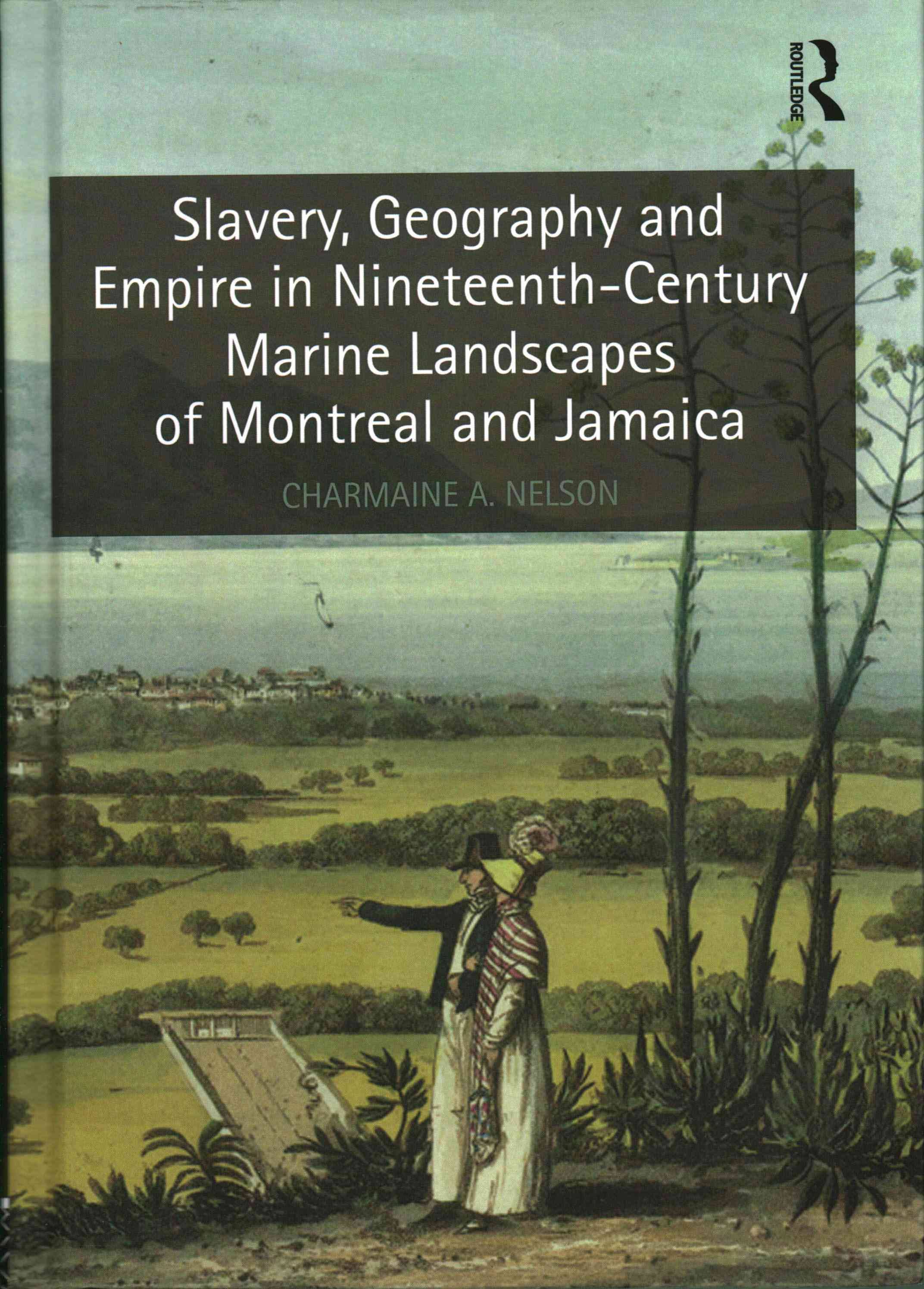


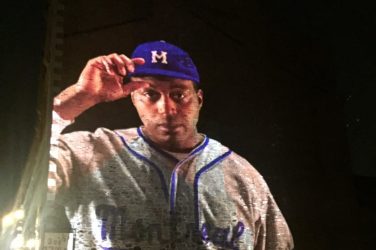
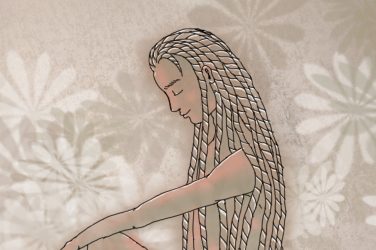
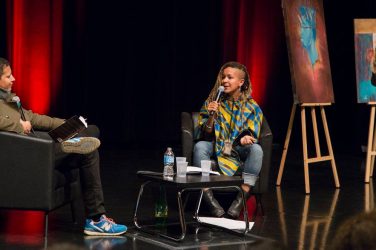

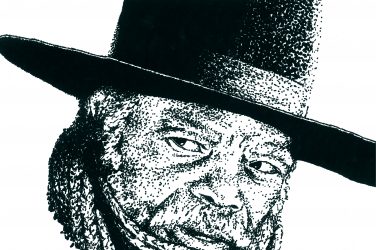
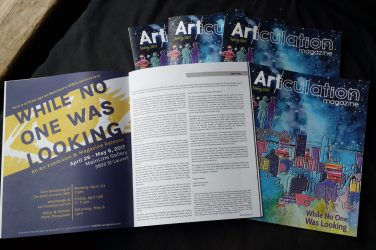
Show Comments (0)